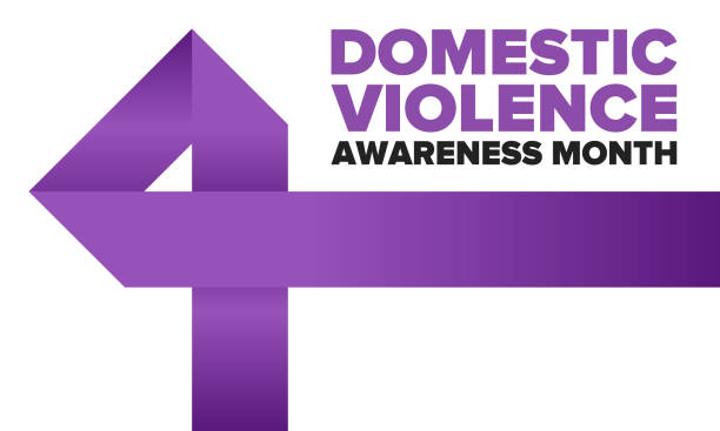
Africa-Press – Gambia. The United Nations General Assembly defines “violence against women” as “any act of gender-based violence that results in, or is likely in physical, sexual or mental harm or suffering to women, including threats of such acts, coercion or arbitrary deprivation of liberty, whether occurring in public or in private life.” The 1993 Declaration on the Elimination of Violence against Women noted that this violence could be perpetrated by assailants of gender, family members and even the “State” itself.
Key facts
Violence against women – particularly intimate partner violence and sexual violence – is a major public health problem and a violation of women’s human rights., Estimates published by WHO indicate that globally about 1 in 3 (30%) of women worldwide have been subjected to either physical and/or sexual intimate partner violence or non-partner sexual violence in their lifetime.
Most of this violence is intimate partner violence. Worldwide, almost one third (27%) of women aged 15-49 years who have been in a relationship report that they have been subjected to some form of physical and/or sexual violence by their intimate partner.
Violence can negatively affect women’s physical, mental, sexual, and reproductive health, and may increase the risk of acquiring HIV in some settings., Violence against women is preventable. The health sector has an important role to play to provide comprehensive health care to women subjected to violence, and as an entry point for referring women to other support services they may need.
Violence against women and girls is one of the most widespread violations of human rights. It can include physical, sexual, psychological and economic abuse, and it cuts across boundaries of age, race, culture, wealth and geography. It takes place in the home, on the streets, in schools, the workplace, in farm fields, refugee camps, during conflicts and crises. It has many manifestations – from the most universally prevalent forms of domestic and sexual violence, to harmful practices, abuse during pregnancy,
Globally, up to six out of every ten women experience physical and/or sexual violence in their lifetime. A World Health Organization study of 24,000 women in 10 countries found that the prevalence of physical and/or sexual violence by a partner varied from 15 percent in urban Japan to 71 percent in rural Ethiopia, with most areas being in the 30–60 percent range.
Violence against women and girls has far-reaching consequences, harming families and communities. For women and girls 16–44 years old, violence is a major cause of death and disability. In 1994, a World Bank study on ten selected risk factors facing girls and women in this age group, found rape and domestic violence more dangerous than cancer, motor vehicle accidents, war and malaria.
Studies also reveal increasing links between violence against women and HIV and AIDS. A survey among 1,366 South African women showed that women who were beaten by their partners were 48 percent more likely to be infected with HIV than those who were not.
Marital rape is a prosecutor offence in at least 104 States, and 90 countries have laws on sexual harassment. However, in too many countries gaps remain. In 102 countries there are no specific legal provisions against domestic violence, and marital rape is not a prosecutor offence in at least 53 nations.
Female Genital Mutilation
Female Genital Mutilation is the removal of part or all of the external female genitalia. In its most severe form, a woman or girl has all of her genitalia removed and then stitched together, leaving a small opening for intercourse and menstruation. It is practiced in 28 African countries on the pretext of cultural tradition or hygiene.
An estimated 135 million girls have undergone FGM with dire consequences ranging from infection (including HIV) to sterility, in addition to the devastating psychological effects. Though all the governments of the countries in which FGM is practiced have legislation making it illegal, the complete lack of enforcement and prosecution of the perpetrators means FGM continues to thrive.
Many of the misconceptions surrounding violence again women center on its causes. There are a number of myths that exist, such as: Men can’t control their anger or sexual urges; alcohol causes men to be violent; women could leave violent partners if they wanted to; and
Men experience equal, if not greater, levels of violence perpetrated by their partners or former partners., Research has shown that the significant drivers of violence against women include:
The unequal distribution of power and resources between men and women; and, An adherence to rigidly defined gender roles and identities i.e., what it means to be masculine and feminine.
Attitudes that condone or tolerate violence are recognized as playing a central role in shaping the way individuals, organizations and communities respond to violence. VicHealth has summarized five key categories of violence supportive attitudes that arise from research. These include attitudes that:
Justify violence against women, based on the notion that it is legitimate for a man to use violence against a woman; excuse violence by attributing it to external factors (such as stress) or proposing that men cannot be held fully responsible for violent behavior (for example, because of anger or sexual urges).
trivialize the impact of violence, based on the view that the impacts of violence are not serious or are not sufficiently serious to warrant action by women themselves, the community or public agencies; Minimize violence by denying its seriousness, denying that it occurs or denying that certain behaviors are indeed violence at all; and
Shift blame for the violence from the perpetrator to the victim or hold women at least partially responsible for their victimization or for preventing victimization., VicHealth has a number of useful publications and research that discuss current attitudes around violence against women.
Violence against women and girls is one of the most widespread violations of human rights. It can include physical, sexual, psychological and economic abuse, and it cuts across boundaries of age, race, culture, wealth and geography.
It takes place in the home, on the streets, in schools, the workplace, in farm fields, refugee camps, during conflicts and crises. It has many manifestations – from the most universally prevalent forms of domestic and sexual violence, to harmful practices, abuse during pregnancy.
Globally, up to six out of every ten WOMEN experience physical and/or sexual violence in their lifetime. A World Health Organization study of 24,000 women in 10 countries found that the prevalence of physical and/or sexual violence by a partner varied from 15 percent in urban Japan to 71 percent in rural Ethiopia, with most areas being in the 30–60 percent range.
Violence against women and girls has far-reaching consequences, harming families and communities. For women and girls 16–44 years old, violence is a major cause of death and disability. In 1994, a World Bank study on ten selected risk factors facing girls and women in this age group, found rape and domestic violence more dangerous than cancer, motor vehicle accidents, war and malaria.
Impact on society
The World Health Organization reports that violence against women puts an undue burden on health care services with women who have suffered violence being more likely to need health services and at higher cost, compared to women who have not suffered violence. Several studies have shown a link between poor treatment of women and international violence. These studies show that one of the best predictors of international violence is the maltreatment of women in the society.
Types of violence
Rape
Rape is a type of sexual assault usually involving sexual intercourse, which is initiated by one or more persons against another person without that person’s consent. The act may be carried out by physical force, coercion, abuse of authority or with a person who is incapable of valid consent, such as one who is unconscious, incapacitated, or below the legal age of consent.
Victims of rape can be severely traumatized and may suffer from posttraumatic stress disorder; in addition to psychological harm resulting from the act, rape may cause physical injury, or have additional effects on the victim, such as acquiring of a sexually transmitted infection or becoming pregnant. Furthermore, following a rape, a victim may face violence or threats of thereof from the rapist, and, in some cultures, from the victim’s own family and relatives.
Domestic violence
Women are more likely to be victimized by someone that they are intimate with, commonly called “Intimate Partner Violence” or (IPV). The impact of domestic violence in the sphere of total violence against women can be understood through the example that 40–70% of murders of women are committed by their husband or boyfriend.
Studies have shown that violence is not always perpetrated as a form of physical violence but can also be psychological and verbal. In unmarried relationships this is commonly called dating violence, whereas in the context of marriage it is called domestic violence.
Instances of IPV tend not to be reported to police and thus many experts believe that the true magnitude of the problem is hard to estimate. Women are much more likely than men to be murdered by an intimate partner, though this form of violence is often portrayed as an issue within the context of heterosexual relationships, it also occurs in lesbian relationships daughter-mother relationships, roommate relationships and other domestic relationships involving two women. Violence against women in lesbian relationships is about as common as violence against women in heterosexual relationships.
Diagnosis planning
Recommendations for clinicians making a diagnosis of Marital Relational Disorder should include the assessment of actual or “potential” male violence as regularly as they assess the potential for suicide in depressed patients. Further, “clinicians should not relax their vigilance after a battered wife leaves her husband, because some data suggest that the period immediately following a marital separation is the period of greatest risk for the women.
Many men will stalk and batter their wives in an effort to get them to return or punish them for leaving. Initial assessments of the potential for violence in a marriage can be supplemented by standardized interviews and questionnaires, which have been reliable and valid aids in exploring marital violence more systematically.”
The most urgent clinical priority is the protection of the wife because she is the one most frequently at risk, and clinicians must be aware that supporting assertiveness by a battered wife may lead to more beatings or even death.
Source: The Gambia | Standard News From The Gambia
For More News And Analysis About Gambia Follow Africa-Press





